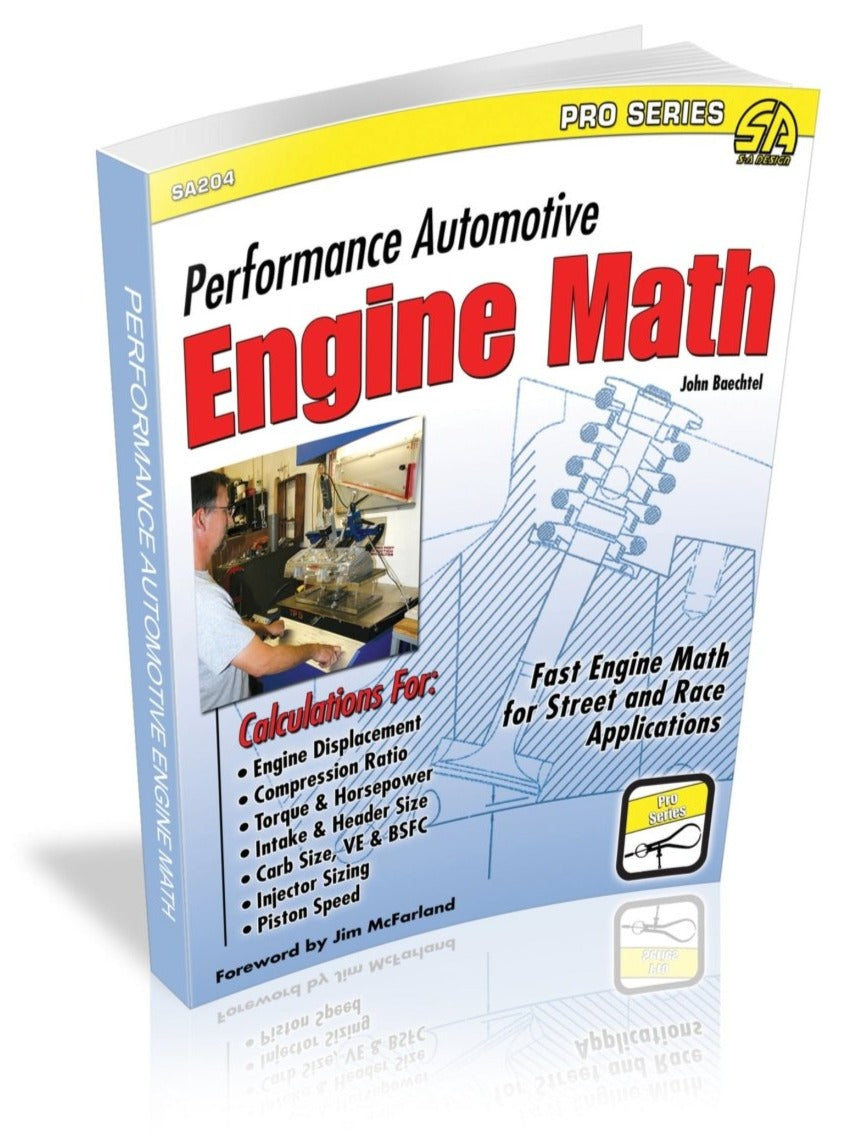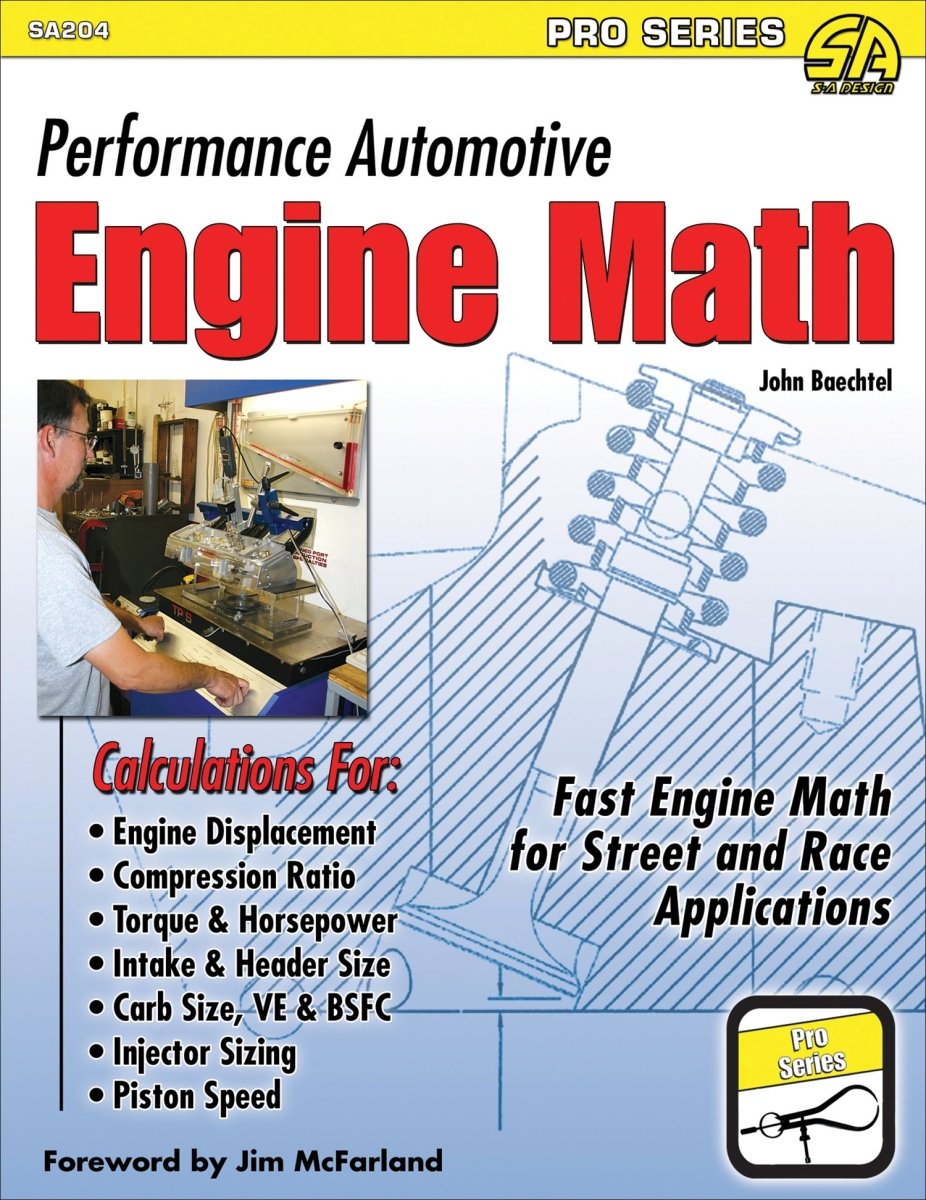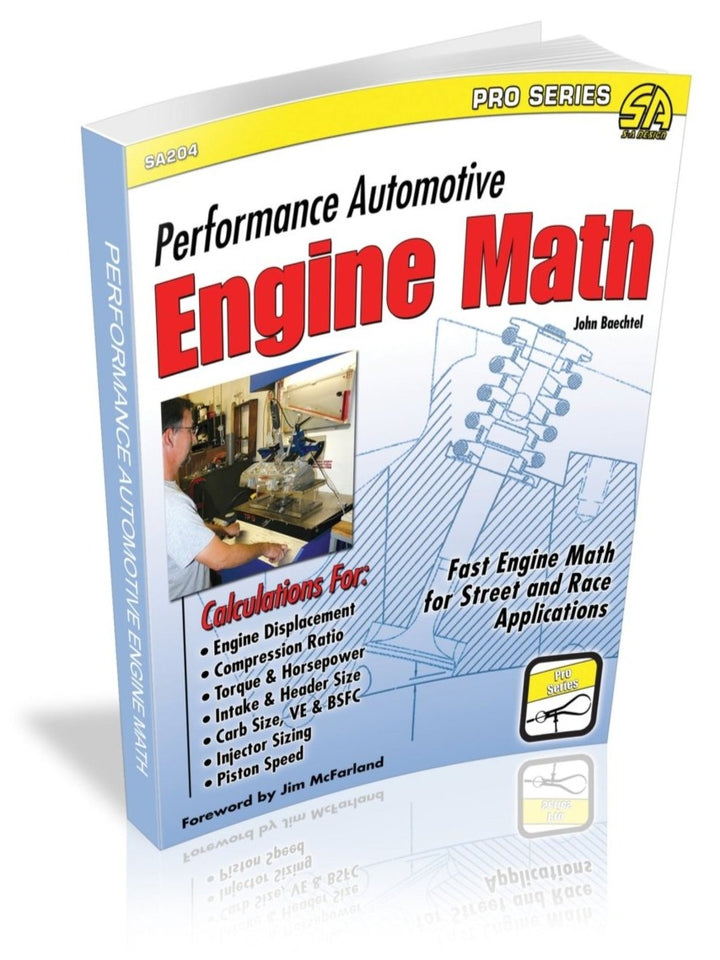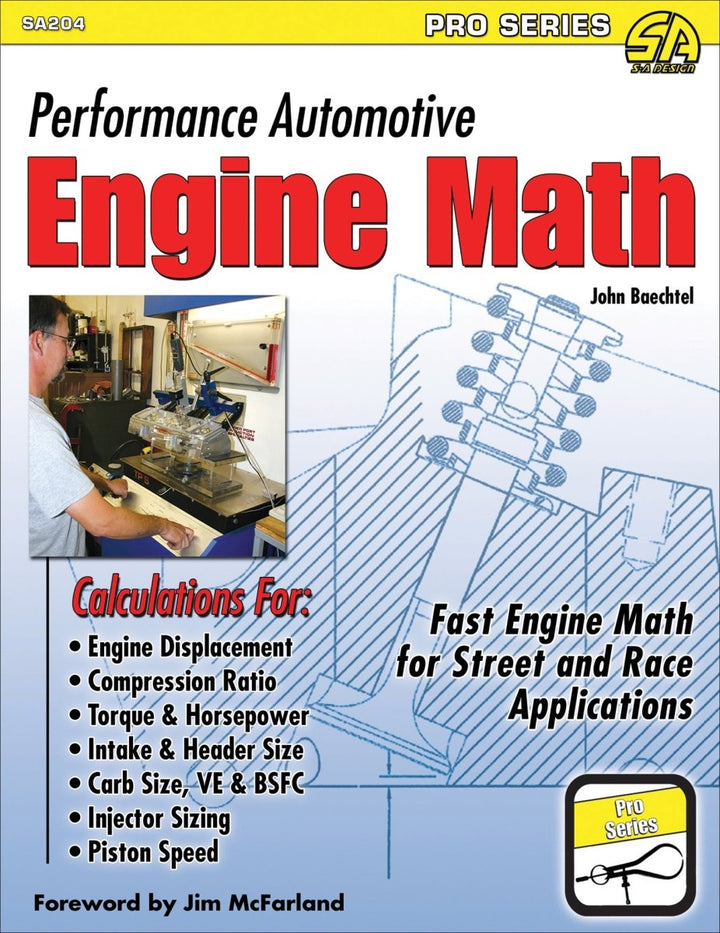Multi-time author and well-regarded performance engine builder/designer John Baechtel has assembled the relevant mathematics and packaged it all together in a book designed for automotive enthusiasts. This book walks readers through the complete engine, showcasing the methodology required to define each specific parameter, and how to translate the engineering math to the hard measurements reflected in various engine parts. Designing the engine to work as a system of related components is no small task, but the ease with which Baechtel escorts the reader through the process makes this book perfect for both the budding engine enthusiast and the professional builder.
Author Baechtel's experience and writing capabilities shine in Performance Automotive Engine Math, and this book will surely be a strong addition to any high-performance library.
Acknowledgments
Foreword by Jim McFarland
Introduction
Chapter 1: Basic Math and Science
Core Principles
Chapter 2: Engine Displacement
Cylinder Bore Diameter
Stroke Length
Calculating Displacement
Calculating Overbore Displacement
Calculating Bore and Stroke Relationships
Bore/Stroke and Rod/Stroke Ratios
Metric Conversions
Equivalent Displacement
What is Bore Spacing?
Sonic Checking
Practie Calculations
Displacement Formulas at a Glance
Chapter 3: Compression Ratio
Factors Affecting Compression Ratio
Finding V2
Displacement Ratio
Cranking Compression
Compression Ratio Formulas at a Glance
Chapter 4: Piston Speed
Maximum Piston Speed
Piston Acceleration
Calculating RPM Limits
Engine Balancing and Overbalancing
Calculating Piston Position
Piston Speed Formulas at a Glance
Chapter 5: Brake Horsepower and Torque
Calculating Horsepower from Torque
How to Read a Dyno Sheet, Part 1
Horsepower and Torque Ratings
Indicated Horsepower
Indicated Torque
Brake Mean Effective Pressure
Mechanical Efficiency
Torque and HP Formulas at a Glance
Chapter 6: Induction Math
Engine Air Capacity
Volumetric Efficiency
Intake Manifolds
Street Carburetor vs Race Carburetor
Choosing Throttle Body Size
Calculating Turbocharger Carburetor Size
Sizing a Turbocharger
Boost and Supercharger Drive Ratios
Wave Tuning
Ram Effects and Inlet Cooling
How to Calculate Runner Cross Section
Induction Formulas at a Glance
Chapter 7: Cylinder Head Math
Converting Combustion Chamber Sizes
Evaluating Port Volumes
Calculating Valve Curtain Area
Calculating Optimum Port Area from Valve Size
Calculating Minimum Port Area
Calculating Port Velocity
Estimating Peak Engine Speed from Airflow
Predicting Horsepower from Airflow
Looking at Valve-Lift-to-Diameter Ratios
Comparing Flow at Different Test Pressures
Understanding Exhaust-to-Intake Ratio
Cylinder Head Formulas at a Glance
Chapter 8: Exhaust System Math
PipeMax Exhaust System Calculations
Calculating Primary Tube Cross Section
Calculating Primary Tube Length
Calculating Collector Diameter and Length
Food for Thought
Exhaust System Wave Dynamics
Exhaust System Formulas at a Glance
Chapter 9: Fuel System Math
Understanding BSFC
How to Read a Dyno Sheet, Part 2
Fuel System Calculations
Fuel System Formulas at a Glance
Chapter 10: Atmospherics and Combustion Math
Atmospheric Effects on Engine Performance
Density Altitude
Performance Weather Stations
Lambda and Air/Fuel Ratios
Dynamometer Correction Factors
Atmospheric/Combustion Formulas at a Glance
Chapter 11: Camshaft Math
Lobe Centers
Understanding Cam Specs
Calculating Valve Lift
Finding TDC
Degreeing the Cam
Calculating Valve Overlap
Camshaft Formulas at a Glance
Chapter 12: Tools and Equipment
Measurement Tools, Standards and Accuracy
Chapter 13: How To Build an Engine Math Spreadsheet
Finding Displacement
Finding Piston Speed
Finding Stroke Length
Other Calculators
Engine Build/Content Sheet
Engine Assembly Sheet
Chapter 14: Engine Simulation and Modeling Software
Performance Trends
Racing Systems Analysis
Comp Cams/ProRacing Sim
Motion Software
Support Programs
Appendix A: Abbreviations and Acronyms
Appendix B: Handy Conversion Factors
Appendix C: Glossary
Source Guide





